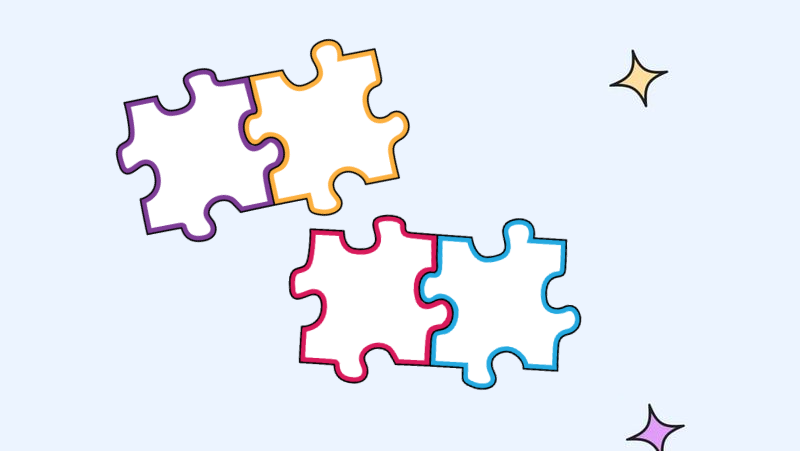Understanding by Design (UbD)
Understanding by Design (UbD) is a backward design framework that starts with end goals, focusing on deep understanding and lasting learning outcomes rather than simply covering content.

Understanding by Design (UbD)
Overview
The Understanding by Design (UbD) model, developed by Grant Wiggins and Jay McTighe, is a framework that emphasizes backward design. Rather than starting with activities or content delivery, UbD begins with the end goal in mind: what students or learners should deeply understand and be able to apply by the end of the learning experience. This model shifts the focus from covering material to achieving meaningful learning outcomes that endure beyond the classroom or training environment.
UbD is structured around three interconnected stages:
Stage 1: Identify Desired Results
This first stage asks designers to clarify the end goals of learning. What should learners know, understand, and be able to do by the end of the course? UbD calls these "enduring understandings"(Knowledge and skills that have long-term value, are transferable across contexts, and reflect the deeper purpose of instruction). For example, in a digital literacy minicourse, the desired result might be learners developing the ability to recognize and avoid online security risks, a skill they will use continuously in their daily lives.
Stage 2: Determine Acceptable Evidence
Once the goals are clear, the next step is deciding how learners will demonstrate their understanding. This stage emphasizes the importance of authentic assessments or tasks that mirror real-world applications of knowledge. UbD pushes beyond multiple-choice tests to performance tasks, projects, and demonstrations that serve as evidence of understanding. In the digital literacy example, this could involve evaluating sample emails to identify phishing attempts rather than just recalling a definition of "phishing."
Stage 3: Plan Learning Experiences and Instruction
Only after establishing goals and assessments does UbD turn to planning the actual lessons, activities, and instructional strategies. This stage focuses on designing experiences that will guide learners toward the desired outcomes. Activities are selected not for their own sake, but because they help bridge the gap between where learners are and the enduring understandings defined in Stage 1. In practice, this could mean designing interactive activities, case studies, or guided reflections that gradually build learners' confidence and skills in safe web navigation.
“The Understanding by Design model begins with the end in mind, ensuring that every activity and assessment is intentionally aligned to foster deep, lasting, and transferable learning.”
UbD reframes instructional design as a process of intentional alignment: starting with clear goals, creating evidence of success, and then building the learning path backward. This ensures that everything learners do directly contributes to achieving lasting and transferable understanding, rather than just short-term memorization.
Implications of the Understanding by Design (UbD) Model for Instructional Design
The Understanding by Design model has important implications for how instructional design is approached. Its emphasis on backward design changes the way educators and designers think about planning, forcing them to shift from activity-driven teaching to outcome-driven learning. Instead of asking, "What content should I cover?" UbD requires asking, "What should learners understand and be able to do, and how will I know they've achieved it?"
1. Prioritizing Deep Learning over Coverage
UbD pushes designers to focus on what really matters. Enduring understandings that go beyond memorization or surface-level recall. This means instructional design is no longer about cramming in as much content as possible but about creating meaningful learning experiences that foster application, transfer, and critical thinking.
2. Alignment Across Goals, Evidence, and Instruction
The three stages of UbD reinforce alignment at every level. Desired results shape assessments, and assessments shape learning activities. This implication is critical: it ensures that every activity and assessment serves a clear purpose rather than existing in isolation. Instructional design becomes more coherent and intentional.
3. Authentic Assessments as Evidence of Learning
UbD's insistence on determining acceptable evidence challenges designers to think beyond traditional tests. The implication is that instructional design must create authentic tasks that mirror real-world performance. This makes the role of the designer more complex but also more impactful, as learning is evaluated through performance, problem-solving, and transfer of knowledge.
4. A Systems View of Curriculum and Instruction
UbD frames instructional design as part of a broader system of teaching and learning. Designers must consider not just content delivery but also how assessments, essential questions, and activities all interconnect to cultivate deeper understanding. The implication is a more holistic and integrated approach to course design.
5. Ongoing Reflection and Improvement
Finally, UbD implies that instructional design is not static. Regularly reviewing goals, assessments, and instruction ensures continuous improvement and responsiveness to learner needs. This positions instructional design as an evolving practice, rather than a one-time planning process.
“UbD challenges instructional designers to think backward, plan forward, and design learning that endures far beyond the course itself.”


